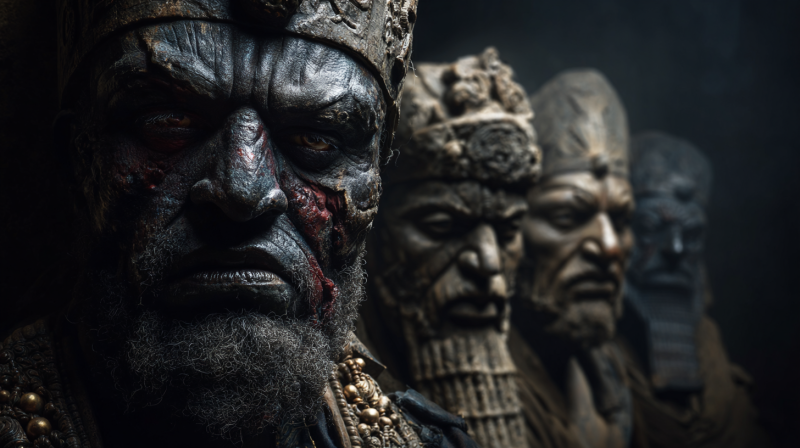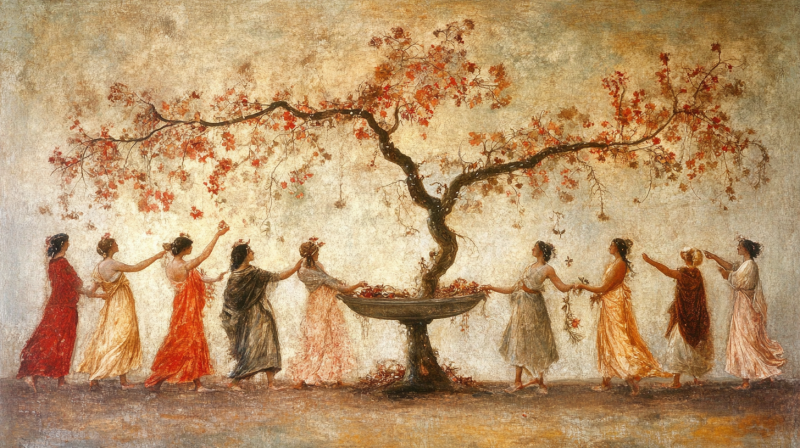Yule, a Pagan tradition, is celebrated on the winter solstice, which falls on or around December 21 in the northern hemisphere (above the equator). Below the equator, the winter solstice falls around June 21. A remarkable occurrence takes place in the skies above us on that day. In the Northern Hemisphere, the earth’s axis tilts away from the sun, and the sun is furthest from the equatorial plane.
In many places around the world, winter festivals are actually times to celebrate the light. In addition to Christmas, there are many other holidays, such as Kwanzaa, Hanukkah, and others, all of which have menorahs that are beautifully lit. Since Yule is a holiday of the sun, illumination in the form of candles, bonfires, and other sources takes center stage. Let’s look at the history of this holiday and the many rituals and traditions that have grown up around the world around the time of the winter solstice.
Origins in Europe:
The winter solstice has long been observed in the Northern Hemisphere. The Norse people, who called it Jul, saw it as a time for lots of feasting and celebration. If the Icelandic sagas are to be believed, a time of sacrifice was also involved, with Druid priests sacrificing a white bull and gathering mistletoe. Wassailing and other traditional practices like the Yule log and adorned trees have Norse roots.
The British Isles’ Celts also observed midwinter. Many traditions still exist, despite the fact that little is known about the specifics of their traditions today.
Saturnalia in Rome:
Only a few civilizations could party like the Romans. Saturnalia was a party with lots of drinking and eating around the time of the winter solstice. It was on December 17. During this seven-day celebration, which was conducted in honor of the god Saturn, there were sacrifices, gifts, privileges for slaves, and plenty of food. Even though this celebration included some gift-giving, its main purpose was to worship an agricultural deity.
Typically, gifts for Saturnalia include things like a writing instrument or tablet, cups, spoons, clothing, or food. People put plants in front of their houses and hung tiny tin ornaments from bushes and trees. As a sort of mischievous forerunner to the ritual of Christmas caroling today, groups of naked revelers would frequently cruise the streets while singing and having fun.
Welcoming the sun to Egypt:
Four thousand years ago, the Ancient Egyptians celebrated every day when the sun god Ra was born again. As their culture grew and spread across Mesopotamia, other cultures decided to join in the celebrations to welcome the sun. They discovered that everything went extremely well—until the weather turned chilly and the crops started to perish. As they observed this annual cycle of birth, death, and rebirth, they came to understand that the sun really did return each year following a time of cold and darkness.
Other Festivities:
The British Isles, Greece, and Rome also frequently celebrated winter celebrations. People didn’t want to give up their old celebrations when a new religion called Christianity emerged. Because it was hard for the new leaders to convert the Pagans, and because Christian churches were built on Pagan temples, Pagan symbols were added to Christian symbols. Even though most people think Jesus was born in the spring, not winter, the Christians got everyone excited about a new holiday on December 25 after a few decades.
The Yule festival is rooted in the Celtic myth of the conflict between the youthful Oak King and the Holly King, according to various Wiccan and Pagan customs. Each year, the Oak King, who stands for the light of the new year, challenges the old Holly King, who represents gloom. In some Wiccan rites, the fight is often reenacted.





